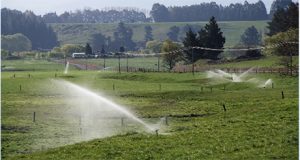According to Private Forests Tasmania (PFT) there is a global shortage of timber, and farmers are the key to delivering the commercially viable resource of the future. In fact, the global demand for timber is expected to quadruple by 2050 (The World Bank, 2016). Source: Timberbiz
Within Australia demand is driven by the home building market and the desire to replace carbon intensive materials and plastics with natural, recyclable and renewable products.
In Tasmania, research into plantation grown hardwood is now coming to fruition with new high-value products close to hitting the marketplace. Technology is also unlocking new uses for materials derived from trees, like ‘green’ chemicals and biofuel.
Providing enough timber and fibre to meet this increased demand presents both a challenge and an opportunity. Farmers are in the box seat to capitalise on this opportunity –there has never been a better time to plant trees.
The outcome of numerous studies show that 400,000 hectares of new plantations are required over the next decade to meet the demand for timber and wood fibre in Australia alone. This amounts to a billion new trees in the ground. This target is in addition to the 70 million trees planted every year in Australian plantations to replace those that have been harvested.
As well as the home building market, the high demand for sustainable timber in Australia is fuelled by the desire to replace carbon intensive materials and plastics with natural, recyclable and renewable products.
The construction industry alone produces around 15% of Global Carbon Dioxide Emissions. Timber is a natural, traditional, beautiful and renewable construction material. It is less carbon intensive to manufacture, transport and erect than structures made of other common materials. It’s no wonder we are now seeing construction of high-rise buildings made completely out of wood. In recognition of these benefits, Tasmania was the first state to launch a Wood Encouragement Policy, which ensures sustainably sourced wood is fully considered, where feasible, in Tasmanian government procurement, particularly for new buildings and refurbishment projects.
Tasmanian timber processors and researchers in collaboration with the National Institute for Forest Products Innovation have been working to produce high-value plantation grown hardwood products for nearly two decades. Engineered wood products in particular are now coming to fruition.
Tasmania has two types of plantation hardwood – thinned and pruned for solid and appearance grade wood products and fibre-managed material, which is primarily grown for pulp.
All of Tasmania’s major timber processors are now working with thinned and pruned material through several trials to develop products for commercial application.
The research trials include:
- Using sensing technology and digital tools to predict moisture content during air-drying with a view to improving timber value;
- Testing the feasibility of commercial scale treatment and modification of Eucalyptus nitens and Eucalyptus globulus sawn boards, and eucalypt wood panel samples, to improve durability and fire resistance;
- Developing a new generation of Tasmanian appearance hardwood products for in-state design and manufacturing – including flooring and linings that can be applied in domestic and commercial buildings;
- Using sensor technology to examine how plantation grown material may vary through the supply chain; and
- Developing laminated structural elements from fibre-managed plantation hardwood.






